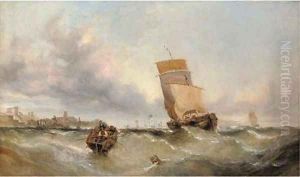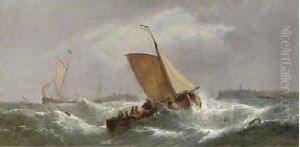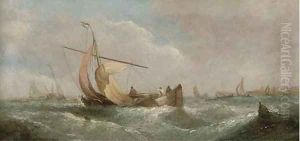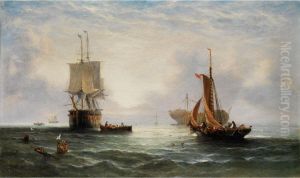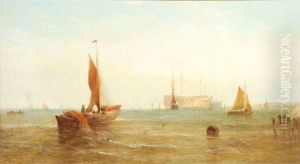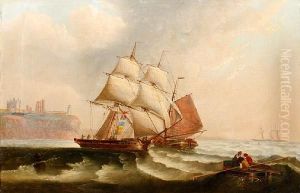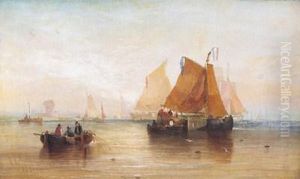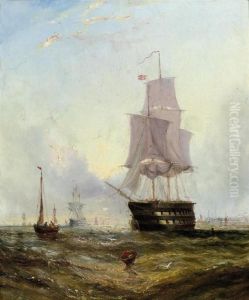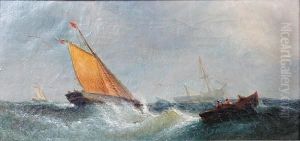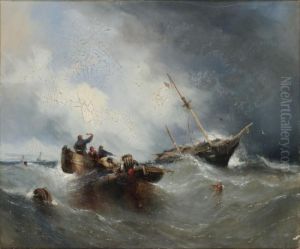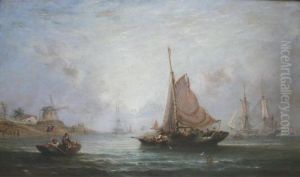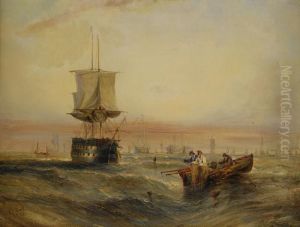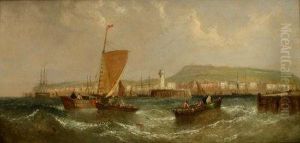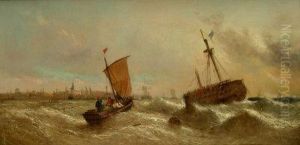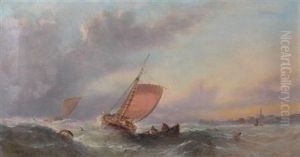William Calcott Knell Paintings
William Callcott Knell was a British marine painter born in 1830, known for his detailed and atmospheric seascapes. He was part of the 19th-century British maritime art tradition, following in the footsteps of artists such as J.M.W. Turner and Clarkson Stanfield. His work captures the majesty and peril of the sea, often depicting ships engaged in battle, struggling against storms, or in serene coastal settings.
Knell received his artistic training under the guidance of his father, William Adolphus Knell (1802-1875), who was also a respected marine artist. This early exposure to marine painting deeply influenced his choice of subjects and his artistic development. Throughout his career, William Callcott Knell exhibited a keen eye for detail and a profound understanding of the sea's changing moods, which he skillfully translated onto canvas.
Throughout the mid-19th century, Knell exhibited his works at prestigious venues such as the Royal Academy, the British Institution, and the Society of British Artists, earning acclaim for his technical skill and atmospheric compositions. His paintings were celebrated for their realistic portrayal of maritime life, and he gained a reputation as a leading marine artist of his time.
Despite his success, detailed records of Knell's life are scarce, and much about his personal life remains shrouded in mystery. What is clear, however, is the lasting impact of his work on the genre of marine painting. Knell's oeuvre provides a valuable glimpse into the maritime history of the 19th century, capturing the beauty and danger of the sea in a way that resonates with audiences even today.
William Callcott Knell died in 1880, leaving behind a rich legacy of marine paintings that continue to be admired for their technical prowess and emotive power. His work remains a significant part of British art history, celebrated for its contribution to the maritime art tradition.




